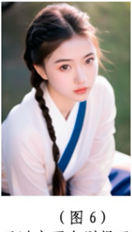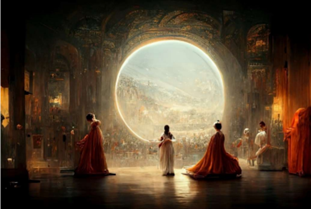Developments in Chinese jurisprudence on AI generated content
On 25 April 2019, in Beijing Film Law Firm v Beijing Baidu Netcom Science & Technology Co Ltd (“Film Case”), the Beijing Internet Court handed down the first-of-its-kind ruling in China concerning the copyrightability of the output automatically generated by a third-party computer software, which consisted of words, graphics and introduced data regarding judicial decisions in the film industry in Beijing. The Beijing Internet Court held that that copyrightable works are only created by natural persons, and therefore denied copyright protection claimed by the software user for the analysis report, although it had a certain degree of originality.
On 24 December 2019, in Shenzhen Tencent Computer System Co Ltd v Shanghai Yingxun Technology Co Ltd (“Tencent Case”), the Nanshan District Court of Shenzhen concluded that the stock market review article automatically generated by an intelligent writing software was copyrightable, holding that the intellectual activities by the plaintiff’s staff, such as the input of data, the setting of triggers and the selection of templates and corpus styles, were incorporated into the creation process of the review and had direct connection with the specific expression of the review. The ruling for the Tencent Case did not indicate that the creation of works protectable under the Chinese copyright law must be completed by human beings.
On 27 November 2023, the Beijing Internet Court took another lead in these developments by releasing the first ruling on copyrightability of AI-generated artworks in Li Yunkai v Liu Yuanchun (“Li Yunkai Case”), i.e. the case discussed in this article. In its ruling, the Beijing Internet Court held that the intellectual investment made by users of an AI painting software in operating the AI program, such as deliberately picking the presentation of characters, selecting prompt words, arranging the order of the prompt words and choosing parameters, is sufficient to reflect the human author’s personalized expression and originality. It therefore found that the AI-generated artwork at issue was copyrightable and qualifies for copyright protection. This judgment, compared to the one for the Film case, offers a more favorable reasoning to assess the copyrightability of AI-generated outputs.
Case facts of the Li Yunkai Case
Mr. Li Yunkai, the plaintiff in this case, had used the Stable Diffusion Artificial Intelligence image generator to produce a number of images depicting an Asian lady with perfect skin and dreamy black eyes. In February 2023, he published these images on the Chinese social media network Little Red Book using a pseudonym name.
On March 2, 2023, Ms Liu Yuchuan, the defendant in this case, posted an article titled “Love in March, in the Peach Blossom” on the Baijiahao platform. This article showed one of the images (please see below) which the plaintiff had generated using Stable Diffusion.

Image title: “The spring breeze brings tenderness” by Li Yunkai, Source: The Beijing Internet Court ruling (2023) Jing 0491 Min Chu No. 11279
The plaintiff believed that the defendant copied the images, removed the watermark from the original image, and reproduced them in her online article. The plaintiff considered these actions a violation of his right of attribution and right of information network dissemination and brought a copyright infringement claim before the Beijing Internet Court, claiming that the defendant make a public apology on the Baijiahao platform and pay RMB 5,000 (about USD 700) in damages.
The Beijing Internet Court´s Findings
The Beijing Internet Court provided the following noteworthy findings on two prerequisites for copyrightable works:
- Intellectual achievements: The AI-generated pictures in this case are the plaintiff’s intellectual achievements since the plaintiff designed the presentation of the characters, selected prompt words (such as “angular symmetrical face, reddish-brown plaits hairs, viewing at camera, golden hour, and dynamic lighting”) and negative prompt words, arranged the specific order of the prompt words, selected the specific parameters for the pictures, selected which of the generated pictures met the expectations, and so on. On the basis of these elements, the Beijing Internet Court decided that the pictures reflected the plaintiff's intellectual input and constituted the plaintiff’s intellectual achievements.
- Originality: The AI-generated pictures are original since the plaintiff designed the characters and their presentation methods and other picture elements through prompts and set the layout and composition of the picture through parameters, reflecting the plaintiff's own choices of personal selection and arrangement. Furthermore, the plaintiff further refined the pictures first obtained by continuing to add prompts, modify parameters, and constantly adjusting and correcting the pictures. This adjustment and correction process reflects the plaintiff's aesthetic choice and personality, transmitting the human author’s personalized expression, and means that the pictures are not merely mechanically obtained. On the basis of these elements, the court decided that the images constituted original works created by the (human) plaintiff and not merely mechanically by the AI software. Based upon the above finding, the Beijing Internet Court held that the image at issue constitutes a work of art under the Chinese Copyright Law since it is a graphic work of art with aesthetic significance, composed of lines and colors.
Based on these considerations, the Court granted copyright protection to the AI-generated artwork and considered that the copying of such image by the defendant constituted copyright infringement. The Court granted the rather modest compensation of RMB 500 (approx. USD 70) in damages and ordered the reimbursement of legal costs of RMB 50 (approx. USD 7).
The judgment by the Beijing Internet Court can be appealed by either party. The defendant was reported to have no plan of appealing the above ruling.
Why Different Approach?
In the Film case, the Beijing Internet Court interpreted the originality requirement as follows:
- "With the development of science and technology, the "works" generated by computer software are getting closer to natural persons in terms of content, form and even expression. However, …the completion of the creation by a natural person should still be the necessary condition for a work to qualify under the Copyright Law."
In the Li Yunkai case recently issued, the Beijing Internet Court did not expressly refute the above view. However, it took a different angle: instead of examining whether the creation is all completed by human beings, it moved to analyze whether the creation incorporates original intellectual achievements. Why the change? The following statement in the Li Yunkai judgment can explain the reasoning of the court in this case, namely the encouragement of creativity or innovation:
- "Currently, a new generation of generative AI technology is being used by more and more people for creative work, with Stable Diffusion and similar models generating beautiful images based on textual descriptions. Many people, including those without drawing skills, are experimenting with these new models to generate content and make tangible representations of their ideas and designs, making the creation of images much more efficient. It should be said that generative AI technologies are changing the way people create, in the same way that technological advances have done so many times in history, by gradually outsourcing human work to machines. …. It is clear that the more technology develops and the smarter the tools become, the less human input is required, but this does not prevent us from continuing to apply the copyright system to encourage the creation of works. When people use AI models to generate images, … in essence, it is still the person who uses the tool to create, i.e., it is the person who makes the intellectual investment in the entire creative process, not the AI model. Encouraging creativity is recognized as the core purpose of the copyright system. Only by correctly applying the copyright system and encouraging more people to create with the latest tools through appropriate legal means can we be more conducive to the creation of works and the development of AI technology. Against this background and technological reality, AI-generated images should be recognized as works and protected by copyright law as long as they reflect original human intellectual input."
AI-generated artwork not copyrightable in the USA
The outcome of the Li Yunkai case discussed here also seems to be contrary to the decision from the United States Copyright Office refusing to register an artwork titled Théâtre D’opéra Spatial (please see below). This is a two-dimensional artwork claimed by Jason M. Allen and generated by using an AI tool called Midjourney.

Image tilted "Théâtre D’opéra Spatial” by Jason M. Allen, Soure: Copyright Review Board of the United States Copyright Office document tiled “Request for Reconsideration for Refusal to Register Théâtre D’opéra Spatial (SR # 1-11743923581; Correspondence ID: 1-5T5320R)”.)
Mr. Allen provided an explanation of his creation process, stating that he input numerous revisions and text prompts at least 624 times to arrive at the initial version of the above artwork. However, the US Copyright Office did not consider that these actions make him the author of the Midjourney artwork because his sole contribution to the artwork was inputting the text prompt that produced it. The US Copyright Office determined that, when an AI technology receives solely a prompt from a human and produces complex written, visual, or musical works in response, the ‘traditional elements of authorship’ are determined and executed by the technology—not the human user. As copyright protection is only available for the creations of human authors, the US Copyright office refused to register a copyright claim if it determines that a human being did not create the work. The Review Board of the United States Copyright Office has also affirmed such refusal.
Takeaways
While the financial value of the Li Yunkai case is low and this ruling is not precedential under the Chinese judicial practice, it is very important and interesting from a legal point of view, as it continues to inform the world what mechanisms are available in China for the protection of AI-generated outputs.
Instead of seeing AI-generated content as purely machine-generated content, the Chinese courts may consider them as human-generated content as long as a sufficient level of intellectual investment occurs in the creation of such outputs, such as prompting the AI with the right instructions and the selection and arrangement of the output generated, which reflect the personal input and originality of the human author.
The above being said, the final word has not yet been spoken on this topic and the copyrightability of AI generated content is expected to become an area of increasing litigation and regulation in the months and years to come, in China and around the world. For now, we will monitor whether this case will be appealed, and we will report back if there are further developments. Should you have any questions, please contact our China IP partners listed on the right-hand side of this article.